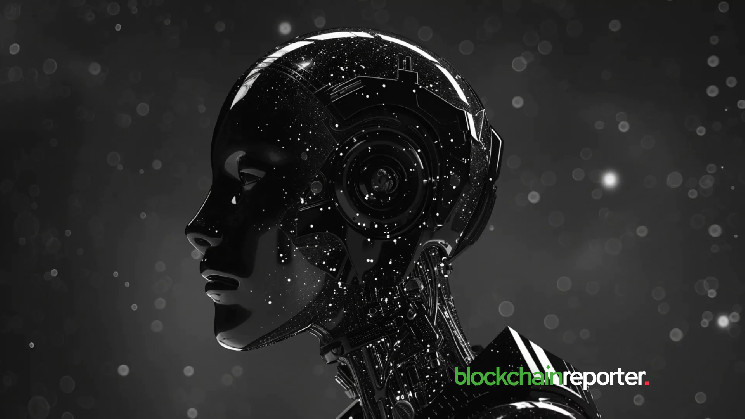- Blockchain: Distributed Database
- AI: The Cognitive Engine that Empowers Machines
- Blockchain and AI: Use Cases
- Enhanced Security and Fraud Prevention
- Decentralized Data Storage
- Smart Contracts and Automation
- Possible Benefits of AI and Blockchain Integration
- Possible Risks of AI and Blockchain Integration
- Final Thoughts
The AI narrative has emerged as one of the top three narratives in the current bull run, and it emphasizes the revolutionary nature of AI. The other two narratives poised to succeed this cycle along with AI include Memecoins and real-world assets (RWA). Adding more to this, GameFi’s union of gaming and decentralized finance is also creating new opportunities. All these narratives determine the general trajectory of development of decentralized technologies. In future, these narratives will be focused on domination of AI, RWAs and GameFi in their respective industries. However, the outcome of the merger of AI with Blockchain is the most beautiful thing that can ever happen in the digital asset ecosystem.
Blockchain: Distributed Database
Imagine a notebook that could be accessed by everyone, with entries being permanent and unable to be deleted. It is a digital ledger that is clear and secure and shared across a decentralized network. As a results, it functions as a distributed database, removing the necessity of a centralized authority. However, it also ensures the integrity of data and the trust between participants.
AI: The Cognitive Engine that Empowers Machines
Artificial intelligence is where programs have the ability to learn and adapt. AI is not limited to learning, but it also involves the development and architecture of base intelligent algorithms. These intelligent algorithms imitate the function of human learning. They enable machines to analyze and comprehend data, learn from it, and then make decisions independently. Additionally, AI serves as a cognitive locomotive for machines. Constantly, it is evolving in the form of a virtual assistant to perfect its interface and applications for various practical uses in daily lives. For instance, in the form of the well-known AI model, ChatGPT.
Blockchain and AI: Use Cases
The combination of blockchain and AI is causing a systematic change in every sector. It is reinventing traditional methods and giving fresh opportunities. These two phenomena lead to the current bull rallies, and in combination, cause an age of revolution and productivity. The following are several fascinating examples of the two similar technologies interacting to create unbelievable advantages.
Enhanced Security and Fraud Prevention
Utilize blockchain’s inherent protection qualities to make AI immune to hacking and instability. The addition of extra protection introduced by a dispersed network through blockchain and a wide range of cryptography systems enhanced AI algorithms. For instance, AI models can only be operated based on the conditions provided in a smart contract. Moreover, an authorized participant can prevent illegal access. The imagination improves security across a wide range of databases, from banking to the healthcare sector.
Decentralized Data Storage
Incorporate blockchain-based decentralized storage solutions to ensure that the data that AI on a large scale bases its decision-making is pure and accurate. AI gains protection from the usage of decentralized storage through encryptions. These encryptions make sensitive data immune to adjustments. Blockchains have been using dedicated artificial intelligence learning methods for several probable scenarios in the future.
Smart Contracts and Automation
Smart contracts consist of predefined rules fixed into a self-executing contract, which is what makes them the example of blockchain and AI integration sophistication. AI algorithms in smart contracts facilitate another layer of the explicitness. This integration allows them to execute assignments without the dependency on human middlemen. The collaboration between blockchain and AI strikes a balance that will lead to fully automated systems. It sounds like the AI narrative is increasing potential in the ongoing bull run.
Possible Benefits of AI and Blockchain Integration
Improved Security: Secured by blockchain, the tamper-proof system enables AI to detect irregularities ensuring that data confidentiality is maintained. It reduces the probability of data breaches or unauthorized access.
Enhanced Efficiency: AI utilizes blockchain’s ledger, while the latter employs AI’s data analysis which fosters the processes thus reducing operational expenses and decision-making time.
Personalized Experiences: The combination of AI and blockchain ensures that organizations utilize personalized data. As a result, it generates products recommendations and services provided by an individual.
Possible Risks of AI and Blockchain Integration
AI algorithm Biasness: AI algorithms learn from training data, which means they are likely to have inherited biasness from the data, therefore, it can make unfair decisions.
Integration Complexity: Blockchain along with other complex technologies such as AI, could become challenging to integrate into organizations since they would disrupt traditional systems and processes significantly.
Regulatory Issues: Since blockchain and AI are rapidly evolving and advancing. Similarly, it is also possible that they will develop faster than the regulatory frameworks that control the compliance regulations and laws.
Final Thoughts
In conclusion, it is important to reemphasize that while the AI narrative is undoubtedly gaining momentum in the current bull run. We must remain aware of the potential risks associated with the integration of blockchain and AI. The threat of AI algorithms, the complexities of integration, and the uncertainty of regulation will pose AI narrative with significant threats. However, as we identify these risks, we only strengthen the foundations of the AI narrative to ensure its prosperity in the years to come.







Leave a Reply